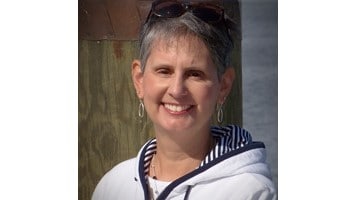What to know
“It’s up to you to be your own advocate.”

Toni's story
My mother died of breast cancer at age 52. Her mother—my maternal grandmother—and my older sister each had breast cancer. Both had successful surgery. I had some calcification, but no breast cancer. [Editor's note: Calcifications are deposits of calcium in the tissues. Calcification in the breast can be seen on a mammogram.] I was waiting for my turn to get the dreaded disease, since it was obviously in my family history. Instead, this happened:
In late 2005, after going through menopause and not having a period for one year, I suddenly had a full flowing 'period.' I was 52 years old. Luckily, I already had a regular gynecologist appointment scheduled the first week in 2006.
I didn't mention the bleeding to my doctor because I always thought that after menopause, periods were "off and on." When I got a Pap test, there were suspicious cells on my cervix. The doctor said I needed to come in for a biopsy. When that was over, the doctor called and said I'd need a D and C. [Editor's note: D and C is a procedure to scrape and collect tissue from inside the uterus. Dilation ("D") is a widening of the cervix to allow instruments into the uterus. Curettage ("C") is the scraping of the walls of the uterus.]
After that, my doctor called to tell me that I had cancer, and needed to get a hysterectomy right away. I started to get concerned. I went in for a complete hysterectomy—including removal of the ovaries and the cervix. I was told that it looked like stage I endometrial cancer, a type of uterine cancer.
But, it turned out that it was more advanced—stage 3. Cancer cells had spread outside the uterus and were found in the peritoneal fluid of my abdomen. [Editor's note: Peritoneal fluid is naturally present in the abdomen, where it helps to moisten the tissue that covers most of the organs in the abdomen.]
I consulted with three doctors. Each laid out very different treatment options, ranging from daily radiation treatments for six weeks, to watching and waiting. Ultimately, I went with my radiologist's recommendation to have three radiation treatments on my vaginal cuff. [Editor's note: The vaginal cuff is the upper end of the vagina that surrounds the cervix and remains open after a hysterectomy.]
That was followed by close surveillance to detect if any cancer cells were present. I had CT scans every 6 months. [Editor's note: A CT scan is also called a CAT scan, and it takes detailed pictures of areas inside the body from different angles, using a computer linked to an x-ray machine.] In 2007, during a routine CT scan, my doctor spotted something suspicious.
Laparoscopic [Editor's note: minimally invasive] surgery revealed lots and lots of tiny tumors. I was enrolled in a clinical trial using chemotherapy treatment. I felt horrible. But chemo is different for different people.
When that was over, I had years of scans every 6 months. In October 2012, I was told that I was no longer considered in remission, but CURED!
At the beginning of my treatment, my doctor told me that he was retiring, but he hung in there for five more years. I feel that he wanted to see it through. He retired after I hit the 5-year mark. I am a true survivor, but I did not do it alone.
My message to other women is to educate yourselves about the symptoms of gynecologic cancers. Any bleeding after menopause is a signal to at least get checked out. And it's up to you to be your own advocate. So don't wait, get checked out if you have bleeding during or after menopause. I can't stress enough how important that is.
